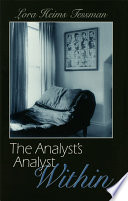

Most ebook files are in PDF format, so you can easily read them using various software such as Foxit Reader or directly on the Google Chrome browser.
Some ebook files are released by publishers in other formats such as .awz, .mobi, .epub, .fb2, etc. You may need to install specific software to read these formats on mobile/PC, such as Calibre.
Please read the tutorial at this link: https://ebookbell.com/faq
We offer FREE conversion to the popular formats you request; however, this may take some time. Therefore, right after payment, please email us, and we will try to provide the service as quickly as possible.
For some exceptional file formats or broken links (if any), please refrain from opening any disputes. Instead, email us first, and we will try to assist within a maximum of 6 hours.
EbookBell Team

5.0
30 reviewsThe Analyst's Analyst Within is the most illuminating study to date of how psychoanalysts' experiences with their own analysts affect their lives, their loves, and their evolving professional identities. A gifted interviewer with equally gifted interview subjects, Tessman samples different gender combinations and age ranges in showing how the values typifying different eras of psychoanalytic theorizing enter into the meaning and impact of training analyses.
Tessman's findings are striking, and they do not end with her discovery of startling differences according to the decade during which a training analysis took place. She also found that neither the theoretical orientation of the training analyst nor his or her technical preferences predicted whether, years later, the analysis would be remembered as satisfying or dissatisfying, as growth promoting or thwarting. Rather, it was the quality of affective engagement that became reliably present, with the figure of the training analyst, inscribed in all his or her particularity, accounting for the perceived sense of a truly productive analytic experience.
Tessman's research program, which encompasses her methodology, her skill as an interviewer, and the wisdom and clarity of thought of her participants, lifts this work well beyond the perfunctory debates about psychoanalytic training that recur in the journal literature. The power of The Analyst's Analyst Within resides in compelling individual narratives in which analysts revisit their own treatment past - and the analyst within - with candor, vividness, and often great poignancy. The result is a book that not only supersedes previous studies of the training analysis but also opens a new vista on how and why analysis works when it works and fails when it fails.